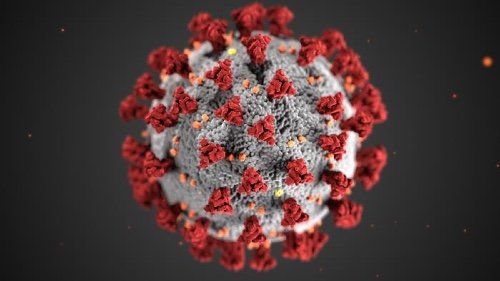After COVID-19, Another Imaging Storm Looms - Are You Ready?
Starting to prepare for the return to normalcy now can help you manage a heavy workload in the near future.

Water cooler talk - or, more likely, talk around the Zoom conference, has focused on either preparing to manage your patients or finding the best ways to handle the influx of imaging studies during the COVID-19 outbreak. And, as we’re still seeing viral spread nationwide, those conversations are still important. But, the time will come soon when we’ll see a return to normalcy with more elective, in-person scanning. Have you given any thought to that day?
In a letter published this week in the Journal of the American College of Radiology, a group of Dutch radiologists from the University Medical Center Groningen in the Netherlands, led by Thomas C. Kwee, M.D., shared their department’s plans for turning the corner to expeditiously handle what they dubbed the “reservoir” of delayed imaging studies.
“Although there is literature on how to prepare a radiology department for operation during the COVID-19 crisis, the post-crisis situation has not yet been addressed,” Kwee wrote. “[We need] to increase awareness about the projected aftermath and consequences of the COVID-19 crisis on a radiology department and to present possible solutions.”
And, while budgetary cuts and financial conservation might prevent you from hiring new staff to handle the accumulating volume of radiologic procedures, the outbreak has given you one valuable resource for preparation - time.
“Advantages of the current COVID-19 crisis for a radiology department, at least ours, are the availability of time to implement solutions and a potentially increased willingness of the entire radiology team to comply with proposed measures compared to measures taken during a non-crisis setting.”
To help you prepare for the pivot to normal operations, Kwee’s team outlined three tactics:
1. Abbreviated MRI: MRI images typically account for a significant volume of imaging studies, but they take a lot of time to conduct and interpret. When you can, switch to abbreviated protocols. Existing research has proven these shorter protocols perform just as well as the more extensive ones in several clinical settings and body regions.
Related Content: Abbreviated MRI Outperforms 3D Mammography With Dense Breasts
2. Even out the workload: In most departments or practices, radiologists operate mainly within their sub-specialty. Maintaining this workflow pattern could be difficult post-COVID-19 as some sub-specialty areas could be overloaded. Take the downtime you have now for providers, who might not be as busy after the outbreak settles, to re-acquaint themselves with areas that will need help to process the imaging volume.
“[In our department,] radiologists with other sub-specializations have been distributed among these vulnerable sections on a voluntary basis and given the task to refresh their knowledge to be able to independently perform basic or common procedures in these sections,” Kwee wrote.
3. Medical student management: Under normal circumstances, medical students receive in-person, supervised training, including plain film reading and ultrasound exams. These activities take staff radiologist time away from image interpretation. And, with that time being a much more scarce commodity in the coming months, Kwee’s department has created self-educational material that medical students can use until the workload reaches a more manageable level.
Even though most facilities and geographic locations are still predominantly focused on the critical needs of inpatient care for individuals with COVID-19 infection, planning early for a return to previous activities would be prudent, Kwee wrote. This department’s suggestions can be used as a model for what might work best for your facility.
“Although some of these solutions may not be applicable to other institutions, some of them may,” he wrote, “and, it is hoped that this communication will create awareness and stimulate discussions on how to prepare a radiology department for the crisis after the currently ongoing COVID-19 crisis.”
The Reading Room Podcast: Emerging Trends in the Radiology Workforce
February 11th 2022Richard Duszak, MD, and Mina Makary, MD, discuss a number of issues, ranging from demographic trends and NPRPs to physician burnout and medical student recruitment, that figure to impact the radiology workforce now and in the near future.
New Collaboration Offers Promise of Automating Prior Authorizations in Radiology with AI
March 26th 2025In addition to a variety of tools to promote radiology workflow efficiencies, the integration of the Gravity AI tools into the PowerServer RIS platform may reduce time-consuming prior authorizations to minutes for completion.










